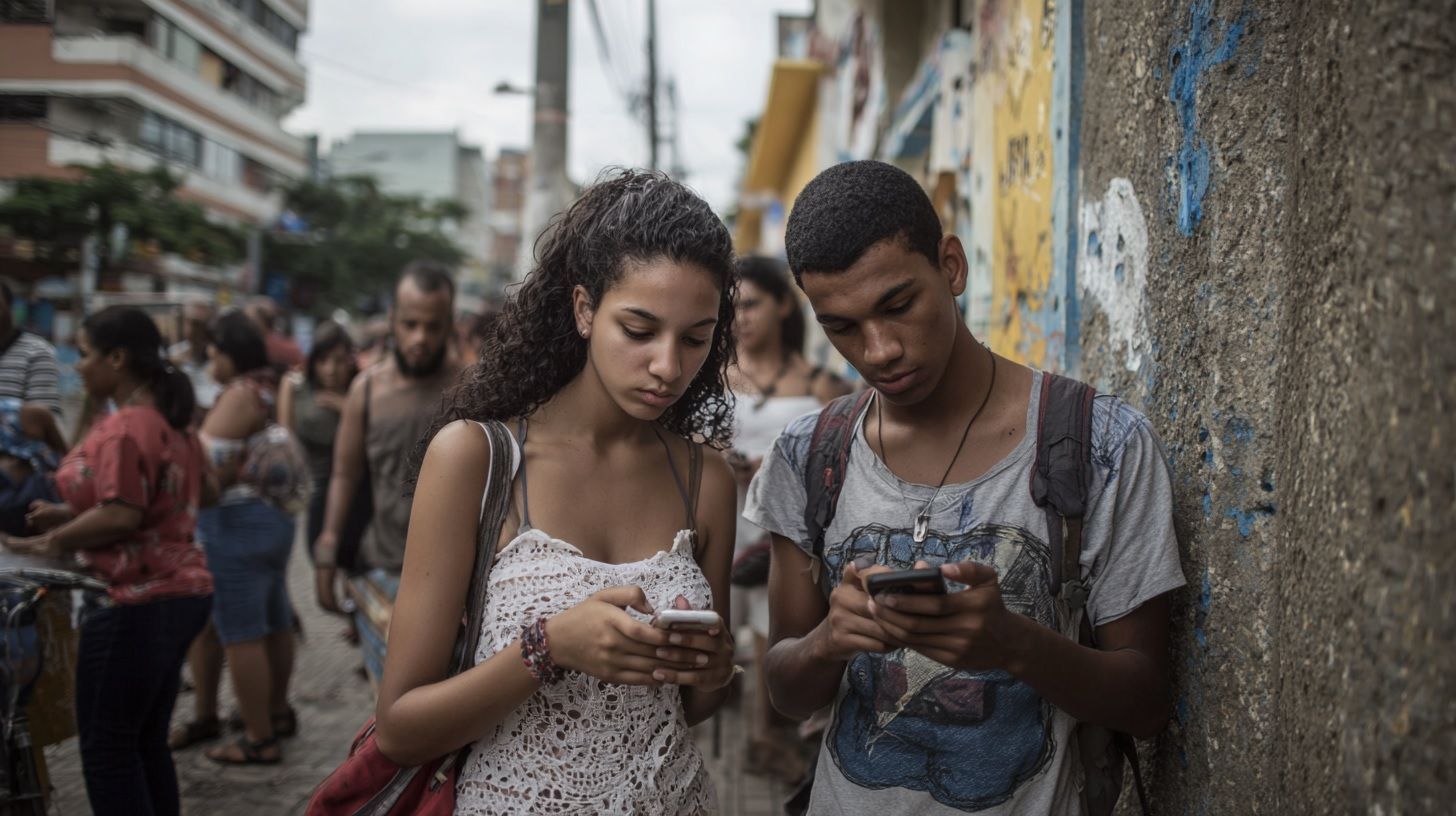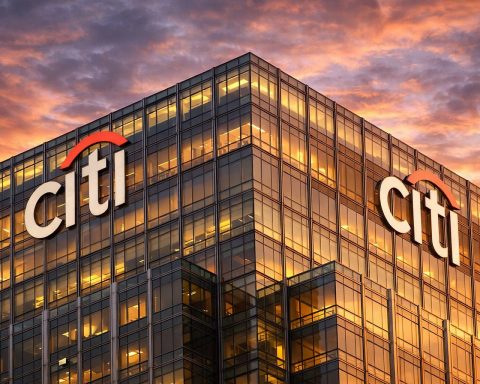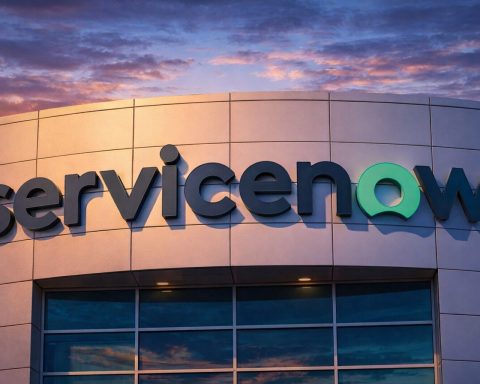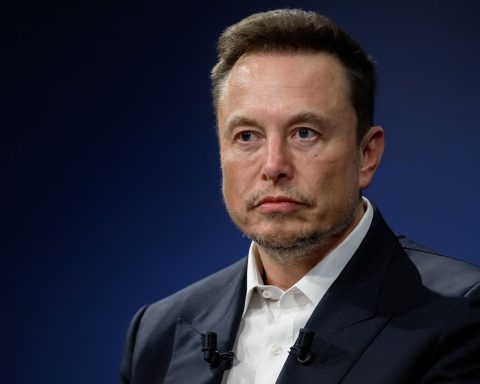- CANTV, the state-owned fixed broadband incumbent, dominated traditional internet with about 56% market share as of late 2022, while its aging ADSL copper network remained slow and repair backlogs persisted.
- From August 2020 to August 2023, Venezuela jumped 50 places in Speedtest’s global broadband index, rising from an average 6.15 Mbps to 29.5 Mbps.
- By mid-2024, Speedtest reported a median fixed broadband speed of about 54 Mbps, placing Venezuela roughly 119th in the world.
- Movistar, Movilnet, and Digitel controlled about 50%, 26%, and 23–24% of Venezuela’s mobile market respectively in 2022–2023.
- About 60% of Venezuelan mobile users had 4G LTE access by late 2023, with 4G deployment in dozens of cities and planned 5G trials.
- Private fiber providers Inter, NetUno, Fibex, and Thundernet offer 100–300 Mbps speeds in major cities, with NetUno advertising ~150–200 Mbps for around $20 per month and Thundernet around $28 for 300 Mbps.
- Maduro’s government set a goal to reach over 3 million homes with fiber, but by late 2023 official figures showed only about 180,000 connected.
- Starlink is not licensed in Venezuela; starting in 2023 pirate installations appeared, with early downlink speeds of 50–150 Mbps and monthly costs of $50–$70, while official kit prices in the black market reached $1,000–$1,500.
- HughesNet does not officially operate in Venezuela, but gray-market satellite setups emerged via neighboring countries, offering about 10–25 Mbps with 600–800 ms latency and 10–50 GB monthly data caps for roughly $50–$100 in nearby markets.
- Power outages are pervasive, with 22 of 23 states experiencing routine outages and a March 2024 blackout knocking out connectivity in at least 8 western states.
Venezuela’s internet infrastructure has long been in crisis. Years of underinvestment, economic turmoil, and government control left the country with one of Latin America’s poorest connectivity landscapes [1] [2]. Until recently, Venezuelans endured some of the slowest internet speeds in the region, frequent nationwide blackouts, and an aging state-run network that could barely handle basic broadband. Now, a tentative turnaround is underway: new fiber-optic providers are emerging in cities, mobile networks are expanding 4G coverage, and even illicit satellite internet kits like Starlink are popping up as desperate workarounds. This report dives deep into Venezuela’s internet access in 2025 – examining the current state of broadband and mobile infrastructure, the key service providers (from state-owned CANTV to private ISPs like Inter, Digitel, Movistar, NetUno), and the growing intrigue around satellite options such as Starlink and HughesNet. We’ll explore recent developments (including government approvals, or lack thereof, and controversies), compare pricing and performance, highlight the urban–rural digital divide, and assess how government policies and power outages continue to shape the Venezuelan internet experience.
Internet Infrastructure at a Glance
Despite some improvements, Venezuela’s core telecom infrastructure remains fragile. Fixed-line internet penetration was under 10% as of 2022 [3], and only about 52% of Venezuelans had mobile broadband subscriptions [4]. By 2023, roughly half of households (48–53%) had any form of internet access at home, leaving nearly half the population offline [5] [6]. Those who are connected often suffer poor speeds and reliability. As recently as 2018, Venezuela’s average download speed was a dismal 1.6 Mbps [7]. The country ranked near the bottom of global internet speed indices, reflecting years of neglect and decay in its networks.
Things have started to change since 2021–2022. With a partial economic liberalization (allowing prices in hard currency) and new private investments, internet speeds have “drastically” improved from their nadir [8]. In fact, between August 2020 and August 2023, Venezuela jumped 50 places in Speedtest’s global broadband speed ranking – moving from an average of 6.15 Mbps to 29.5 Mbps average download speed [9]. As of mid-2024, Speedtest reported a median fixed broadband speed of ~54 Mbps in Venezuela [10], a huge leap from single-digit speeds a few years before. This puts Venezuela at roughly 119th in the world for fixed speeds (up from ~169th in 2020) [11]. Mobile internet has improved more modestly: median mobile download speeds hover around 12 Mbps, ranking an abysmal 138th of 147 countries as of May 2024 [12]. In short, Venezuelan connectivity is no longer the absolute slowest in Latin America, but it still significantly lags regional averages and neighbors in terms of speed and access quality.
Crucially, these gains are largely concentrated in major urban areas. New fiber-optic deployments and 4G upgrades are mostly in big cities like Caracas, Valencia, or Maracaibo. Meanwhile, rural and remote communities remain deeply disconnected – often reliant on decades-old copper phone lines or spotty 3G signals, if anything. The sections below dissect the fixed broadband, mobile network, and satellite internet landscapes in Venezuela, followed by analysis of pricing, regional disparities, government policies, and everyday user experiences in this evolving digital battleground.
Fixed Broadband: From Aging DSL to a Fiber-Optic Revival
For years, Venezuela’s fixed broadband was synonymous with CANTV’s DSL service (branded “ABA”), which ran over old copper telephone lines. CANTV – the state-owned telecom incumbent – still dominates fixed internet, with about 56% market share of “traditional internet” subscriptions as of late 2022 [13]. Its DSL network once provided most Venezuelans’ home internet, but in the 2010s it became notoriously slow and unreliable. The infrastructure suffered from theft of copper cables, lack of maintenance, and damage that could leave entire neighborhoods offline for weeks. Even by 2021, the average Venezuelan fixed-line speed was under 3 Mbps, and CANTV was overwhelmed with repair backlogs [14] [15]. According to a late-2023 survey, 40% of reported CANTV line breakages had gone unrepaired for over two years, and most customers waited 4–6 months for the state provider to fix service issues [16]. This collapse in DSL service, coupled with frequent power outages (which knock out modems and local exchanges), left many users with intermittent or effectively unusable broadband through the 2010s [17] [18].
Enter fiber-optics. Since 2020, Venezuela has seen a mini-boom in fiber-to-the-home (FTTH) broadband, led by both CANTV and a wave of private ISPs. CANTV itself began rolling out a GPON fiber network (marketed as ABA Ultra or GPON service) to modernize its infrastructure. The state company claims to offer residential fiber plans ranging from 60 Mbps up to 300 Mbps, and even up to 1 Gbps for enterprise customers [19] [20]. Coverage is still limited to certain urban areas, but the government has made FTTH a priority. In late 2023, President Nicolás Maduro set a goal to “reach over 3 million homes” with fiber internet, via partnerships with private investors [21] [22]. As of that announcement, official figures showed only 180,000 households connected by fiber-optic lines [23] – a tiny fraction of the goal, but a start. CANTV’s strategy includes upgrading old copper lines to fiber in dense neighborhoods and even selling minority stakes of the company to fund these improvements [24]. Indeed, the government floated 5–10% of CANTV’s shares on the stock market in 2022–2023 to raise capital for network upgrades [25].
Perhaps more striking is the rise of private broadband providers deploying fiber. After years of strict state controls, the telecom sector was partially liberalized: price freezes were lifted and licensing for new ISPs was streamlined [26] [27]. The results have been dramatic – the number of authorized ISPs more than doubled (133% growth) between 2017 and 2023, from about 103 companies to over 240 [28] [29]. Many of these newcomers are small fiber providers targeting neighborhoods that CANTV underserves. Companies like Inter, NetUno, Fibex, Thundernet, Giga (G Network), WOW, and others have rolled out high-speed broadband in select cities [30] [31]. Several cable TV operators (Inter, NetUno, Supercable, etc.) also upgraded or augmented their networks with fiber. These private ISPs are delivering 100 to 300 Mbps speeds (and even higher in some cases) over fiber connections, often with better latency and customer service than the state telco [32] [33]. For example, NetUno’s residential plans offer about 150–200 Mbps download speeds for a monthly cost around $20 (sometimes with data caps or “Fair Use” limits) [34] [35]. Another provider, Thundernet, advertises 300 Mbps plans but reportedly gives users 750–900 Mbps in practice for about $28 per month [36]. These offerings have started to overtake CANTV in quality, if not yet in subscriber numbers. By Q4 2022, private ISP Digitel (primarily a mobile carrier, but also offering fixed wireless broadband) had already captured ~21% of fixed internet subscriptions, with cable/fiber operator Inter at ~7% and others (including NetUno and regional fibers) making up ~11% [37]. CANTV’s once-monopolistic grip on broadband is steadily slipping as urban consumers switch to faster alternatives.
Table 1: Major Fixed Broadband Providers in Venezuela (2024) [38] [39]
Provider Type & Technology Coverage Typical Speeds Notes CANTV (ABA) ADSL over copper; FTTH (GPON) in select areas Nationwide (urban & rural), state-owned ADSL: ~1–10 Mbps (legacy); Fiber: 60–300 Mbps (up to 1 Gbps for some) [40] [41] Largest ISP (~56% share [42]). Aging copper network caused slow speeds, long outages. Now upgrading to fiber (180k homes connected so far) [43]. Low cost plans, but capacity and reliability issues persist. Inter Cable (HFC) + some Fiber Major cities (cable TV footprint) Up to ~100 Mbps on cable; higher on new fiber plans Second-largest private ISP (~7% share [44]). Offers cable broadband bundles and starting fiber in areas. Known issues with uptime due to infrastructure limits [45]. NetUno Cable + Fiber Cities (Caracas, Valencia, etc.) ~50–200 Mbps on fiber plans (varies by region) Mid-size cable ISP; expanding fiber offerings. Some plans have data caps (unlimited off-peak) [46]. Popular $20/mo tier ~150 Mbps [47]. Limited coverage outside urban centers. Regional Fiber ISPs (e.g. Fibex, Thundernet, WOW, Giga) Fiber-to-the-Home (local networks) Select urban neighborhoods (differs by provider) 100–300 Mbps, often over-provisioned (users report higher actual speeds) Dozens of new entrants since 2020. Often offer premium speeds (up to 300 Mbps or more) at $25–$50/mo [48] [49]. Compete on service quality. Coverage is patchy – each covers certain zones. Digitel (fixed) 4G/5G Wireless Home Broadband Limited (pilot in Barinas, Nueva Esparta) [50] Testing ~100–300 Mbps (fixed 5G CPE) Primarily a mobile operator, Digitel has trialed fixed wireless broadband (5G CPE routers) with 300 GB plans [51]. Minor share (~21% in CONATEL’s “fixed” stats, likely counting mobile data devices) [52]. Potential to expand wireless home internet if 5G grows.
CANTV’s fiber initiative and the influx of private ISPs have undeniably boosted speeds in Venezuela’s cities. By late 2022, Ookla noted Venezuela’s fixed broadband was 16% of the regional median speed – still low, but a marked uptick from prior years [53]. As fiber connections replace copper, many urban customers are experiencing double- or triple-digit Mbps for the first time. However, this urban revival stands in contrast to the countryside. In smaller towns and rural areas, CANTV DSL remains the only option (if internet exists at all) [54]. Those lines often top out at 1–2 Mbps and suffer frequent outages. The new fiber providers rarely extend outside profitable city markets, and CANTV’s fiber buildout has yet to reach most rural communities. The president of telecom chamber CASETEL warns that extending fiber to the interior is hampered by high deployment costs – the government charges hefty fees for using rights-of-way (e.g. underground conduits and utility poles), which make rural fiber expansion unprofitable [55] [56]. (In 2021, the cost for running fiber through public “telecom routes” in Caracas was hiked from $0.10 to $0.90 per meter, dramatically increasing rollout costs [57].) As a result, Venezuela’s fixed broadband revolution is largely an urban phenomenon, at least for now. The digital divide in fixed access – shiny new gigabit fiber in wealthy enclaves versus rusted copper in farming villages – remains a critical challenge.
Mobile Internet: 3G, 4G, and the Elusive 5G Future
Mobile networks are a lifeline for internet access in Venezuela, especially for those without fixed service. The country has three mobile operators: Movistar (Telefónica of Spain), Movilnet (state-owned under CANTV), and Digitel (a local private carrier). Movistar is the largest by subscribers, with about 50.5% of the mobile market, followed by Movilnet at ~26% and Digitel at ~23.5% [58]. All three offer voice and data (internet) services, but their coverage and technology deployments differ significantly:
- Movistar – the market leader – has the most extensive network, covering all 23 states. It launched 4G LTE in 2016 and has built LTE coverage in major cities and many towns. Movistar’s 4G operates mainly on 1800 MHz and 2100 MHz bands, and the company has invested in upgrading backhaul to improve data speeds. As of 2023, Movistar reportedly has 4G in dozens of cities and is prepping for future 5G trials. It also still runs 3G and 2G networks nationwide for legacy devices.
- Movilnet – the state carrier – was once dominant but has lagged badly in modernizing. Its network largely relies on 2G GSM and 3G UMTS coverage, with a delayed 4G rollout that only started in 2019. Movilnet’s 4G presence is limited (a few urban centers) and plagued by resource constraints. Users often report Movilnet data speeds are poor and its network maintenance is lacking (owing to CANTV’s financial struggles). Movilnet’s subscriber share has eroded as customers migrated to other providers for better service.
- Digitel – the smallest by coverage – has a more targeted network focusing on urban and economically active areas. Digitel was actually a 4G pioneer, launching LTE in Caracas and other main cities as early as 2013 on its 1800 MHz spectrum. Though its footprint is not nationwide, where available Digitel often provides excellent speeds and was the first to offer services like VoLTE. Digitel’s constraint is limited spectrum and capital; still, it’s carved out a loyal base in cities for those who prioritize faster mobile internet.
The big picture: about 60% of Venezuelan mobile users have access to 4G LTE now, according to industry officials [59]. Pedro Marín, head of CASETEL, noted in late 2023 that the migration from 2G/3G to 4G (and “4G+” LTE-Advanced) has reached nearly 60% of lines [60] [61]. This is a remarkable change from just a few years prior, when most were stuck on slow 3G. The government’s easing of telecom regulations helped here as well – operators could charge more sustainable tariffs, affording them revenue to invest in expanding 4G coverage [62]. CONATEL (the regulator) even held a telecom fair in 2023 touting planned 5G investments and encouraging partnerships to bring next-gen wireless to Venezuela [63] [64].
However, the path to 5G will be slow and steep. True 5G deployment requires massive upgrades: “Companies must buy new equipment and nearly double or triple their cell sites,” Marín explained, which demands significant financing [65] [66]. Telecom companies are hesitant to make that leap when consumers may not afford 5G devices or pricier data plans. A modern 5G smartphone costs $300+, yet Venezuela’s monthly minimum wage is under $5 ( yes, five dollars ) [67] [68]. In fact, in mid-2024 a mid-range phone (~$400) equated to over 112 months’ pay at minimum wage – nearly 9½ years of income [69]. With poverty still widespread (only ~15% of Venezuelans earn $300 or more per month [70]), there’s a very limited market for 5G in the immediate term. As a result, the first 5G offerings will likely be niche and urban. The government has been boasting about private investments to “bring 5G to the whole country”, but even officials admit it will be a gradual, long-term process [71].
Table 2: Mobile Network Operators in Venezuela [72] [73]
Operator Ownership Subscriber Share Network Technologies Coverage & Notable Info Movistar (Telefónica Venezuela) Private (Telefónica, Spain) ~50% (market leader) [74] 2G GSM, 3G UMTS, 4G LTE (since 2016) Widest coverage nationwide (cities & rural). Strong 3G footprint; 4G in major areas (ongoing expansion). Planning 5G trials. Generally regarded as reliable, though speeds moderate. Movilnet (CANTV) State-owned (Venezuelan govt) ~26% (2022) [75] 2G GSM, 3G; limited 4G LTE (since ~2019) Once dominant, now struggling. 3G network aging, 4G available only in select urban zones. Budget-friendly but performance and customer support are poor. Undergoing partial privatization to raise investment [76]. Digitel Private (Venezuelan-owned) ~23–24% (2022) [77] 2G GSM, 3G, 4G LTE (since 2013) Smaller coverage (primarily cities, towns along economic corridors). First with 4G, known for fast speeds where it has signal. Limited spectrum means some congestion. Trialing fixed-wireless broadband (LTE/5G CPE) in select areas.
Despite the growth of 4G, mobile data speeds in Venezuela remain quite slow by global standards. As noted, median mobile download is around 12 Mbps [78], which is a fraction (perhaps 1/5) of the global median. Even within Latin America, Venezuela’s mobile internet is at the bottom – only Haiti and Cuba might rank lower. Part of this is due to capacity constraints: operators have limited spectrum and outdated infrastructure, so 4G here doesn’t reach the high speeds seen elsewhere. Additionally, network outages and blackouts frequently knock mobile service offline. (Cell towers typically have batteries or generators for backup power, but Venezuela’s prolonged outages often outlast those backups [79].)
On the positive side, mobile internet remains the most accessible form of connectivity for millions of Venezuelans. A basic Android smartphone with a prepaid SIM can get a user onto WhatsApp or Facebook, even in areas where fixed lines never existed. The cost of mobile data per GB in Venezuela is not the cheapest, but operators offer small “social media packs” or zero-rated messaging to help cash-strapped users get online. Still, affordability is a concern: many mobile data packages also cost more than the monthly minimum wage, similar to fixed internet [80]. This means a significant portion of the population has to carefully ration their data usage or rely on public Wi-Fi where available.
Looking ahead, 4G LTE will continue to expand and fill coverage gaps, and we may see modest 5G pilots in wealthier districts (especially if Chinese or other foreign vendors provide favorable financing for equipment). But the bulk of Venezuela’s mobile users will be on 3G/4G for the foreseeable future. The government’s 2023 telecom plan explicitly calls for increasing 4G penetration and “little by little” moving to 5G [81]. Until the economy improves and infrastructure is strengthened, Venezuela’s mobile internet will likely remain in catch-up mode relative to the rest of Latin America.
Satellite Internet: Starlink Hype Meets Regulatory Reality
Could satellite internet bypass Venezuela’s terrestrial troubles? In theory, satellites offer a tantalizing solution for a country with vast rural areas and poor infrastructure. Services like SpaceX’s Starlink (a low-Earth orbit satellite constellation) promise high-speed connectivity anywhere, without relying on local cables or cell towers. And legacy providers like HughesNet (which uses geostationary satellites) have long connected remote sites where no fiber or DSL reaches. In practice, however, satellite internet in Venezuela is wrapped up in regulatory red tape and illicit workaround markets.
First, it’s important to note that Venezuela’s government tightly controls telecom and spectrum rights. Any entity providing internet service on Venezuelan soil is supposed to have a CONATEL license. Historically, the state even had its own satellite (Venesat-1 “Simón Bolívar”) launched in 2008 to provide communications coverage. CANTV used Venesat-1 to deliver some rural broadband links, but that satellite fell out of service in March 2020 [82], ending Venezuela’s official foray into satellite internet. Since then, no state-run satellite option exists, and the government has been wary of foreign satellite systems operating independently of its oversight.
HughesNet, a major satellite internet provider in the Americas, does not officially operate in Venezuela – and says it’s actively trying to prevent its signal from being used there illegally [83]. Nonetheless, starting around 2019, enterprising locals in border regions began smuggling in HughesNet equipment and subscribing through neighboring countries [84]. In western states like Zulia, Táchira, Mérida and others near Colombia, people would purchase HughesNet dishes and modems, register them with a Colombian address (where HughesNet service is available commercially), and install them in Venezuela. The user pays an intermediary, who in turn pays HughesNet in Colombian pesos – effectively a gray-market satellite hookup [85]. Similar schemes occurred in southern Bolívar state using Brazilian satellite ISPs’ equipment [86]. These connections are technically illegal, since they’re unlicensed by CONATEL, but they proliferated out of necessity in areas with no other viable internet. HughesNet’s service (via geostationary satellite) offers around 10–25 Mbps download speeds and a high latency (600–800 ms), with data-capped plans often in the range of 10–50 GB per month. The cost in neighboring markets is roughly $50–$100 USD per month depending on the plan, far beyond what most Venezuelan households can afford. Thus, these illegal installs were mostly used by businesses, community centers, or better-off individuals desperate for connectivity. HughesNet’s corporate stance is that any such use in Venezuela is unauthorized, and the company has even explored ways to identify and cut off Venezuelan terminals piggybacking on its network [87].
If HughesNet is the old guard of sat internet, Starlink represents the new wave – and it has generated tremendous buzz in Venezuela. Starlink began expanding across Latin America in 2022, gaining authorization in countries like Brazil, Chile, Colombia, and others. As of mid-2023, Starlink was officially available in 10 Latin American markets (including Mexico, El Salvador, Panama, Dominican Republic, Ecuador, Peru, Brazil, Chile, Colombia, and even war-torn Ukraine outside the region) [88]. Venezuela, notably, was not on that list [89]. SpaceX cannot legally offer Starlink service in Venezuela without a license from CONATEL, which it has not obtained. Despite this, the sleek Starlink dishes began appearing on rooftops in Caracas and other cities in 2023 [90]. Venezuelans found ways to get Starlink hardware delivered – often by purchasing kits in Panama, Miami, or elsewhere and importing them (sometimes smuggling them through customs) [91]. Local e-commerce sites like Mercado Libre saw Starlink “starter kits” being sold for $1,000 to $1,500 USD in Venezuela’s secondary market [92]. (For comparison, the official Starlink kit price in neighboring countries is around $599, so Venezuelans were paying double or more for the underground import.) Once a dish is in hand, users register the service under an address in a permitted country (for example, some used Panama addresses) and then simply use it inside Venezuela. Early adopters of these pirate Starlink setups reported downlink speeds of 50–150 Mbps and latency ~30–50 ms – a night-and-day improvement over terrestrial options there. The monthly Starlink subscription in Latin America runs about $50–$70 (it’s ~$52 in Panama for the basic plan, for instance) [93], and notably Starlink has no data caps (truly unlimited usage) [94] [95]. To tech-savvy Venezuelans hungry for fast internet, this sounded like a dream come true – if one could swallow the steep cost.
The Venezuelan government’s stance, however, has been firm: Starlink is not authorized to operate, and using it is technically illegal. CONATEL officials have quietly warned that people caught operating unlicensed satellite terminals could face penalties. Telecom experts in Caracas noted that because Starlink uses radio spectrum (Ku/Ka band) that is regulated, unauthorized use violates Venezuelan law. “If you use a licensed band without permission, two things happen: the company gets sanctioned and the user gets sanctioned,” explained telecom analyst Fran Monroy in August 2023 [96]. Penalties could include fines (amount at authorities’ discretion) and confiscation of the Starlink antenna [97]. Essentially, one risks having their $1000 dish seized by the government if found. Monroy and others likened it to the DirecTV saga: when DirecTV (AT&T) pulled out of Venezuela due to sanctions, some people pointed their dishes to Colombian satellites and used foreign decoders, which was illegal and led to equipment seizures when discovered [98]. A similar “black market” scenario is now unfolding with Starlink.
So far, enforcement appears spotty – Starlink users try to stay under the radar, literally and figuratively. It’s hard for authorities to detect a Starlink dish unless they see it or someone reports it. There were reports of Conatel agents scanning for signals in some areas, but no widespread crackdown has been publicized. Nonetheless, the risk of a sudden shutdown looms. Notably, Starlink’s service can theoretically be turned off for certain regions by SpaceX if ordered (the terminals use GPS geofencing), and SpaceX would be unlikely to defy a direct Venezuelan government order given geopolitical pressures. At the same time, Venezuela’s regime might fear the political fallout of seizing internet equipment – especially since some Starlink users could include businesses or NGOs.
Interestingly, experts have floated a compromise solution: Starlink could enter Venezuela legally via a local partner. Because SpaceX itself seems reluctant to engage directly with the Maduro government (there were rumors of informal talks, but no license application as of 2023 [99]), the idea is that an approved ISP could resell Starlink. “A permitted company in the country like Telefónica [Movistar] or Inter could buy the distribution rights. It wouldn’t be Starlink per se, but Inter or Telefónica offering the Starlink service,” according to Monroy – “that is the most likely scenario” for eventual legal availability [100]. In other words, a Venezuelan ISP could integrate Starlink into its offering for remote areas, complying with regulations while letting SpaceX avoid direct entanglement. As of 2025, this remains hypothetical. No such deal has been announced, and the government might prefer to keep a tight grip via its own planned satellite (there have been discussions of launching a new Venesat-2 with Chinese help, but nothing concrete yet).
For now, satellite internet in Venezuela lives in a gray zone: officially scarce, but informally present. Aside from Starlink and HughesNet, a few niche providers do exist – mainly enterprise VSAT services. Companies like Telecorp and Syntelix offer corporate satellite connectivity (VSAT) for businesses and government, often at very high costs [101]. These require a CONATEL license and are not marketed to the general public. They fill needs for remote oil fields, military outposts, or emergency backup links, but are not part of the consumer internet conversation.
In summary, satellite internet holds both promise and controversy in Venezuela:
- Performance: Starlink’s low-earth-orbit technology delivers excellent speeds comparable to urban broadband (100+ Mbps) with low latency [102]. HughesNet (geo-sat) is slower and high-latency, but still much better than nothing for a village in the mountains.
- Availability: Technically, satellites can cover the whole country. Practically, legal availability is zero – neither Starlink nor HughesNet sells service legally in Venezuela [103]. Only illegal or very specialized corporate connections exist.
- Cost: Far beyond average affordability. A Starlink setup costs ~$1100+ upfront (kit plus first months) and $50+ monthly [104] [105]. HughesNet plans similarly cost dozens of dollars for only a few GB of data. Considering the tiny salaries in Venezuela, this confines satellite internet to a wealthy few or critical shared uses.
- Regulation: The government has not given Starlink the green light and likely won’t unless it can be brought under local control. The situation is somewhat analogous to countries like China, Iran, or Russia that also have not approved Starlink, citing security and sovereignty (Venezuela is often grouped with them as places yet to approve Starlink [106]). Caracas is undoubtedly wary of an independent communication channel it can’t easily surveil or shut off. Satellite internet also undermines the state telco’s monopoly. Thus, expect continued regulatory resistance to unsupervised satellite internet.
Venezuelans, meanwhile, will keep dreaming of uncensored, high-speed internet beamed from the sky. In early 2024, many residents even reported seeing the eerie “train of Starlink satellites” crossing their night sky – a visible reminder that the technology is literally overhead [107]. Whether that translates into legal access or stays an underground trend depends on political decisions still to come.
The Cost of Connectivity: Prices vs. Paychecks
One of the biggest barriers to internet access in Venezuela is affordability. The country’s economic collapse led to hyperinflation and drastic currency devaluation throughout the 2010s. While the government has relaxed currency controls (allowing widespread use of US dollars), most Venezuelans earn very low incomes by global standards. The monthly minimum wage as of 2024 was a mere 130 bolivars – about $3.50–$5 USD depending on exchange rate [108]. Even professionals often earn in the tens of dollars per month. This makes the cost of modern internet service almost prohibitive for many.
According to Freedom House, by 2023 “the average cost of many internet packages [in Venezuela] continued to exceed the country’s monthly minimum wage,” exacerbating the digital divide [109]. For example, CANTV historically offered very cheap plans in local currency (equivalent to only ~$1–$2) but those were for ultra-slow 1 Mbps DSL and became largely unavailable to new customers [110]. As CANTV and others raised tariffs in recent years to realistic levels, even their “cheap” plans now cost a few dollars – outpacing the minimum wage. Private ISP plans, especially fiber, are priced in USD and target the minority who have decent incomes or receive remittances from abroad. Table 3 illustrates some representative internet plan prices in Venezuela and how they stack up against earnings:
Table 3: Sample Internet Service Pricing in Venezuela (2024) [111] [112]
Service & Speed Monthly Price (USD) Notes & Affordability CANTV DSL – 4 Mbps (legacy plan) ~$2–3 (if still offered) CANTV’s cheapest tiers were subsidized. Often unavailable for new subscribers [113]. Speeds very low (bare minimum for basic browsing). Still >50% of a $5 monthly wage – and often needs additional phone line fees. CANTV ABA Ultra Fiber – 60 Mbps ~$10–$15 Entry-level fiber. More reasonable speed, but price equals 2–3× minimum wage. CANTV has promoted some fiber plans for around $10–$15 to attract users, though availability is limited. Private Fiber (e.g. Fibex/Inter) – 100–200 Mbps $25–$40 Common price range for new fiber ISPs [114]. For instance, Fibex’s standard plan in many areas is ~$40 for 200 Mbps, sometimes promotional $30 [115]. This is 8–10× the minimum wage – affordable only to middle/upper-class households or businesses. Premium Fiber (e.g. Thundernet) – 300–900 Mbps $28–$50 Surprisingly some top-tier plans are <$30 (Thundernet 300 Mbps at $28) [116], but others like 1 Gbps can be ~$100 [117] [118]. $50 is ~10× minimum wage. These plans target affluent users (15% or less of population can comfortably pay $50+) [119]. Mobile Data – 1 GB (prepaid bundle) ~$1–$1.50 Mobile operators offer small data packs at low absolute cost. $1 for 1 GB is actually expensive per GB, but they know customers buy what they can afford. Heavy use (10–20 GB) would quickly cost $10+ — again out of reach for many, so usage is kept low. Mobile “Unlimited” Monthly (Movistar/Digitel) ~$20–$30 (if available) A few high-end postpaid plans with unlimited or large caps exist around $20+. Virtually nobody on minimum wage can subscribe. These are aimed at corporate or well-paid users. Starlink Satellite – ~150 Mbps ~$70 + equipment ($600+) The service itself is $50–$70/mo [120] but requires expensive hardware ~$600 (or $1000+ black-market) [121]. Total cost could exceed 200× the minimum wage upfront. Only wealthy individuals or organizations can even consider this. HughesNet Satellite – 25 Mbps, 20 GB data ~$60 A typical plan in neighboring markets is around $60 for 20 GB. On a per-GB basis extremely costly. Again, far beyond average means; mostly used by businesses or groups that pool funds.
As the table shows, internet in Venezuela is essentially priced in dollars, while many salaries are still in bolivars (or very low dollars). This has created a stark divide:
- Those with access to hard currency (dollars or crypto, etc.) – often via overseas family remittances, NGO stipends, or work in certain sectors – can afford decent internet. A family receiving $100 a month from abroad, for instance, can pay $30 for fiber and still have funds for other needs.
- Those earning local wages in public sector jobs or informal work often can’t pay $20+ for internet. They end up using minimal mobile data (recharging a dollar or two when possible) or using public Wi-Fi hotspots (some plazas or stores offer free Wi-Fi). Many simply go without home internet, reinforcing the socio-economic digital divide.
It’s worth noting the government in the past tried to keep internet cheap by fiat – enforcing low CANTV prices. But by 2019, this became unsustainable (CANTV couldn’t maintain the network with essentially no revenue). Thus the “tariff freeze” was relaxed around 2020 [122], allowing all providers to raise rates to realistic levels. Inflation in bolivars was so extreme that today most advertise prices directly in USD or USD-indexed. For example, Inter may quote a plan as $30 (paid at the parallel market rate in bolivars), and update the bolivar price every week. This dollarization of internet pricing, while economically necessary to fund operations, indeed means internet access is a luxury for many. A 2023 survey found internet adoption growing in cities as more private options became available, but lower-income households still struggle to pay for consistent service [123] [124].
The government has made some gestures toward improving affordability. In late 2023, Maduro announced tax exemptions on telecom equipment imports (to reduce operators’ costs) and special financing for projects to expand connectivity [125]. If these measures help ISPs lower their capital expenditures, they could potentially pass savings to consumers. However, the fundamental issue is that salaries are too low. Until incomes rise significantly, or some subsidy is introduced, a large portion of Venezuelans will remain priced out of high-quality internet. One partial remedy has been community initiatives – e.g., a neighborhood pooling money to get a fiber line and sharing the Wi-Fi, or NGOs providing connectivity in schools and public spaces for free. These help, but are limited in scale.
In summary, the high cost relative to local income is a key factor behind Venezuela’s low internet penetration (only ~53% of households online) [126]. The recent improvements in infrastructure won’t benefit the masses if people can’t afford the services. Affordability is thus a crucial piece of the puzzle in Venezuela’s internet story, directly tied to the country’s broader economic recovery (or lack thereof).
Urban vs. Rural: A Deep Digital Divide
Throughout this report, a recurring theme has been the gap between connected cities and disconnected rural areas. Venezuela’s geography and developmental disparities have yielded a classic urban–rural digital divide, now one of the widest in Latin America. Consider the following contrasts:
- In Caracas or Valencia (large cities), a resident might have access to multiple ISPs: CANTV DSL or fiber, an Inter cable line, maybe a Fibex fiber offering, plus all three mobile networks’ coverage. They could potentially enjoy 100 Mbps fiber at home and have 4G on their phone as backup. Power outages still hit cities, but sometimes backup generators keep critical infrastructure running for a while.
- In a small village in Apure or Amazonas (plains or jungle regions), there may be no broadband infrastructure at all. If CANTV’s phone lines never reached the village, there is no DSL. There is likely patchy Movilnet GSM signal or maybe a spot of Movistar 3G if near a highway, but mobile data might be EDGE or slow 3G at best. Many such communities rely on internet cafes in the nearest town or go without. Some NGOs have tried installing point-to-point radio links or satellite hookups for community centers, but these are exceptions.
- Even in mid-sized towns (municipal capitals), service can be limited. The government said in 2023 that 87% of the country’s municipal capitals had fiber connectivity of some kind [127], but this statistic likely means fiber backbone passing through, not that homes in those towns are connected. In practice, outside the big metros, one often finds only CANTV DSL and perhaps one local wireless ISP or cable provider.
Surveys by the Observatory of Public Services (OVSP) in 2023 illustrate this divide. They found that across 12 major cities, about 53% of households had fixed internet by late 2023 (up from 49% earlier in the year) [128]. But nationwide (including rural areas) the household internet figure was closer to 48% [129] – implying that rural household connectivity is far lower, likely 10–20%. Most rural areas “are served almost exclusively by CANTV” and often with very low quality service [130]. Even the government admits that “the interior of the country” is where internet growth is hardest. CASETEL’s president specifically flagged the interior (rural areas) as suffering slow internet growth due to the cost challenges mentioned [131].
The lack of reliable electricity outside urban centers compounds the issue. Many rural communities endure daily power rationing of several hours [132]. Naturally, during those blackouts, any internet (if it exists) goes down – cell towers shut off, home routers die, etc. In March 2024, a widespread blackout knocked out connectivity in at least 8 states in western Venezuela [133]. In fact, 22 of Venezuela’s 23 states experience routine scheduled outages or load-shedding of electricity [134]. This means even if a village has a newly installed Wi-Fi hotspot, it may be unusable for significant parts of the day. Urban centers like Caracas have somewhat more stable power (being political hubs), whereas rural states like Zulia, Táchira, Mérida, and others near the border suffer relentless outages [135].
Another aspect is education and digital literacy – urban residents, especially youth, tend to be more net-savvy and demand connectivity, whereas rural populations (older and with different livelihoods) might not push as hard for internet if they’ve never had it. That said, with the ubiquity of smartphones, even rural Venezuelans now know what they’re missing. The cultural expectation of internet access has risen, and rural folks are just as eager to get online for communication with family (many have relatives abroad) and accessing information. So the demand is there; the supply is lacking.
The government’s fiber expansion goals, if realized, could reduce the gap. For instance, reaching “3 million homes with fiber” [136] would have to include many in secondary cities and towns, not just Caracas apartments. Similarly, moves to allow small ISPs and community networks could gradually bring wireless broadband to more remote areas. Starlink or other satellite (if ever legalized) might directly target rural customers (e.g., satellite for a farming region that will never get fiber). There have been some pilot projects, such as the Internet Society setting up community Wi-Fi in a Caracas barrio and looking at rural wireless solutions [137], showing the potential of bottom-up initiatives.
Until such efforts scale up, however, Venezuela’s internet will remain a tale of two worlds. The capital city now boasts coffee shops with fiber Wi-Fi and tech startups springing up as connectivity improves, while a village just a few hundred kilometers away might still treat a 1 Mbps dial-up equivalent as a luxury. This urban–rural digital divide reinforces economic inequalities and limits opportunities for those outside the main urban corridors. Bridging it will require targeted investment and likely public–private collaboration, since purely market-driven ISPs have little incentive to wire up sparsely populated or poorer zones.
Government Policy, Censorship, and Regulation
The Venezuelan government plays a dominant role in the telecom sector, and its policies have been a double-edged sword for internet development. On one hand, state control and mismanagement contributed to the network’s decline; on the other, recent policy shifts and investment (albeit limited) have enabled the nascent recovery. Here we examine how government actions – from regulatory structure to censorship – impact internet access:
- Regulatory Authority (CONATEL): Venezuela’s telecom regulator, CONATEL, is not independent. It answers directly to the Ministry of Communication and Information, and its board is effectively appointed by the president [138] [139]. This means decisions often align with political directives. During the Chávez and Maduro years, CONATEL tightly controlled licensing, spectrum, and pricing. For example, for a long time it enforced strict price controls on services (to combat inflation), which ended up starving telcos of funds for upkeep [140]. On a positive note, CONATEL in the last 3 years did expedite permits for new ISPs as part of the “flexibilization” policy [141] [142] – this helped the surge in private providers. But favoritism is alleged: some new ISP applications languor if the owners aren’t politically connected [143]. Also, state-owned CANTV historically enjoyed monopoly privileges.
- CANTV Nationalization and Partial Privatization: CANTV was nationalized in 2007 under Chávez (it had been privatized in the 1990s). As a state company, it became subject to political priorities – e.g., keeping prices ultra-low, extending service to rural zones even if unprofitable, and unfortunately being used as a tool of censorship (more on that soon). This led to poor financial health and service quality. Recognizing these issues, Maduro in 2022 announced that CANTV (and mobile arm Movilnet) would sell a minority stake (5–10%) to private investors [144]. This was a notable ideological shift, dubbed a break from the pure socialist model [145]. By end of 2022, 1.3 million shares of CANTV had been sold on the Caracas stock exchange [146]. In late 2023, more shares were offered. The idea is to raise capital and impose some market discipline. It’s early to judge results, but CANTV did report using some funds for network upgrades [147]. Still, the government retains majority control, so outcomes depend on its execution.
- Internet Censorship and Content Blocking: Venezuela’s government has a track record of censoring the internet to stifle dissent. Both state-run CANTV and private ISPs have been ordered to block websites that incur the regime’s displeasure [148]. For instance, independent news sites, opposition media, blogs, and even some social media domains have been intermittently blocked. In 2022 alone, at least 70 websites were blocked by the government’s behest [149]. These blocks are usually done through DNS tampering or IP blocking at the ISP level – CANTV being the largest conduit means its blocks have wide impact. During politically sensitive moments (e.g., elections, protests), internet shutdowns or throttling have also been reported. All of this affects internet access quality; users sometimes have to use VPNs to reach blocked information. The Law on Social Responsibility in Media (RESORTE) and upcoming “Cyberspace Law” provide the legal facade for such controls, allowing CONATEL to order blocking or deletion of online content with little due process [150]. While this censorship is more about content than infrastructure, it’s part of the user experience – many Venezuelans encounter an internet where certain sites just don’t load on CANTV lines, for example.
- Surveillance and Privacy: Being largely state-controlled, Venezuela’s internet likely has surveillance of traffic. Activists suspect CANTV networks are monitored for keywords or that the government can spy on unencrypted communications. There have been incidents of phishing and spoofed sites targeting dissidents. This environment can make users self-censor. It doesn’t directly limit speeds or access, but it’s a layer of government involvement that shapes how people use (or fear using) the internet.
- Supportive Measures: In fairness, the government has taken some steps to improve infrastructure lately. We discussed the import tax exemptions for telecom equipment (decreed for 1–2 years to lower costs for ISPs) [151]. Also, the push for the Telecom Fair 2023 where 99 companies (including 16 foreign) participated [152] suggests the regime is soliciting investment and expertise. Some Chinese companies have historically provided technology (Huawei, for instance, was involved in 4G deployment for Movilnet). Sanctions, however, complicate partnerships – US sanctions on Venezuela made companies like AT&T pull out (DirecTV exit in 2020) and deter some Western investment. The CASETEL president mentioned that to truly modernize (e.g., double international bandwidth), it’s “very difficult with the sanctions” as they pose obstacles to telecom growth [153]. This hints that Venezuela might struggle to get new submarine cables or global transit capacity due to being somewhat isolated financially.
- Future Policy Outlook: The government’s immediate plan (2023–2025) is to continue a hybrid approach: let private players carry more load (hence many new ISPs), but maintain ultimate control and the ability to intervene. We might see more privatization if CANTV’s situation doesn’t improve, but also possible crackdowns if the internet empowers opposition voices too much. The upcoming “Cyberspace Law” could formalize more internet controls. Yet, there is an understanding even at high levels that without improving internet, economic recovery is crippled – businesses need connectivity, the education and banking systems need it, etc. So the regime needs a better internet, but wants to avoid losing grip over the narrative.
In summary, government involvement has been a mixed bag: It rescued CANTV in 2007 but then underinvested; it imposed policies that hurt networks, but now is loosening some to allow improvements; it invests in fiber and 4G expansion, but also blocks websites and deters completely open access. Venezuela’s internet freedom status remains “Not Free” largely due to these political factors [154]. The state’s heavy hand in telecom means progress in connectivity will always have a political dimension here, for better or worse.
Internet Quality and User Experience: Blackouts, Outages, and Speeds
Finally, what is it actually like to use the internet in Venezuela day-to-day? The user experience can vary wildly depending on location and provider, but several general observations hold:
- Reliability is a core issue. Unexpected outages are common. Users frequently wake up to find their CANTV DSL line down because of a cable fault, or their neighborhood fiber ISP offline due to power issues at a distribution node. During 2023, the Venezuelan NGO VE Sin Filtro documented dozens of incidents monthly where connectivity in various states was disrupted by infrastructure failures [155]. For example, in February 2023, damage to a main fiber-optic trunk left CANTV users in three states offline for 18 hours [156]. In June 2023 alone, VSF recorded 16 separate internet disruption incidents across the country [157]. Electricity blackouts underpin many of these outages: if the power is out for 8 hours, the cell towers and central offices usually die after their batteries deplete. Thus, a bad day of power (not uncommon) is a bad day for internet everywhere.
- Electricity woes: As mentioned, essentially the entire country outside the capital suffers scheduled or unscheduled power cuts daily [158]. This is arguably the single biggest obstacle to a stable internet. Even if ISP networks improve, they ultimately rely on the power grid. Users have adopted coping mechanisms: those who can afford have bought backup generators or at least battery backups for their Wi-Fi routers. Some communities coordinate to run diesel generators at internet exchange points. But by and large, when the grid goes down, so does connectivity. Notably, blackouts don’t even spare mobile networks – unlike some countries where cell service stays during outages, Venezuela’s lengthy cuts mean cell sites go dark too [159]. The only workaround in total blackouts is if one has a charged phone and can find a faint mobile signal from a distant area not affected.
- Speed and performance: If you’re lucky enough to have a new fiber or a decent 4G signal, speeds can actually be quite good now – on paper. Many urban users report being able to stream HD video, make video calls, and download large files, which was nearly impossible a few years ago. The median fixed download of ~54 Mbps (mid-2024) means half of fixed-line users tested at least that fast [160]. Those are likely the fiber/cable customers. However, the other half may still be on slow DSL or wireless links. For them, speeds under 5 Mbps or even under 1 Mbps remain reality. Latency varies: on fiber or 4G, ping times of 20–50 ms within Venezuela are common, but if traffic routes through Miami (as much does), sometimes latency is 100–200 ms due to international link inefficiencies. Jitter and packet loss are issues on overloaded networks (like CANTV DSL at peak hours).
- Congestion: In the evenings, networks often get congested as everyone comes online. CANTV’s backbone is known to get saturated, causing slowdowns and high latency after 7 pm. Some of the new ISP offerings also quietly have a contention ratio – e.g., that NetUno plan which is 200 Mbps but has a download limit/cap to manage congestion [161]. It’s not unlimited full speed 24/7. Users have learned to schedule large downloads overnight when data might be unlimited or less contended (NetUno apparently doesn’t count usage in early morning hours against your quota) [162].
- User sentiment: According to OVSP surveys, nearly half of users (46.9%) complained of frequent service interruptions, and about a third (32%) complained specifically of slow speeds, even after improvements [163]. This indicates that while things are better than before, frustration remains high. Social media is full of Venezuelans venting about their ISP going down or how slow a promised “20 Mbps” plan actually runs. At the same time, when a person upgrades from a 2 Mbps DSL to a 50 Mbps fiber, they often express a sense of astonishment – suddenly Netflix works without buffering, Zoom calls don’t drop, etc. So experiences are highly polarized depending on whether one has gotten onto the new networks.
- Comparisons: Regionally, Venezuelan internet quality is still considered poor. Countries like Chile or Brazil enjoy average fixed speeds 3–4 times higher (Chile’s average is ~277 Mbps, Brazil ~186 Mbps) [164] [165]. Even neighbors like Colombia and Panama have much faster and more reliable networks on average (Panama’s average ~169 Mbps [166]; Colombia ~167 Mbps [167]). Mobile-wise, 12 Mbps median in Venezuela is far below, say, Colombia’s ~30 Mbps or Brazil’s ~40+ Mbps. In global rankings, Venezuela might have climbed out of the bottom 10, but it’s still in the bottom quartile. Websites often load slowly, and online gaming or real-time applications suffer unless you have one of the top-tier connections.
- Positive trends: Despite all the negatives, the trend is upward. It’s telling that Venezuela improved 50 spots in the Speedtest global index in three years [168] – that’s a faster climb than most countries, albeit from a low base. People are noticing that things they couldn’t do online before (like HD streaming or working remotely) are gradually becoming feasible, at least in the cities. The arrival of Starlink (even in limited form) gave some hope and certainly spurred conversations about how to further open up connectivity. The government’s newfound willingness to allow private sector input is yielding tangible benefits in performance.
To illustrate a user experience, imagine “María,” a university student in Maracaibo (Zulia state). In 2019, María had only a Movilnet 3G connection which barely let her check emails, and constant power cuts meant she was offline more often than not. In 2025, María’s family has subscribed to a local fiber ISP (Thundernet) offering ~300 Mbps, and when the electricity is on, she can video-chat with her sister abroad and attend online classes – a huge quality-of-life improvement. However, blackouts still hit Maracaibo daily; María’s family bought a small generator to run the internet during outages, but fuel is expensive and sometimes unavailable. When everything works, the internet feels modern and fast; when things go wrong (power outage or the fiber ISP has an issue), they’re back to square one. María’s cousin in a rural part of Zulia has no such option – he relies on a neighbor’s unstable CANTV DSL that syncs at 1 Mbps on a good day, and often falls back to no internet at all when that line dies for weeks. These contrasting vignettes are common in Venezuela’s patchwork internet landscape.
In conclusion, Venezuela’s internet access is a story of slow recovery and persistent adversity. Speeds have improved markedly in urban areas thanks to fiber and 4G expansions [169] [170], but reliability issues (power failures, infrastructure decay) continue to plague users [171] [172]. The digital divide between well-served zones and underserved ones remains one of the country’s biggest challenges, with rural connectivity largely stagnant [173]. The high cost of quality internet relative to local incomes means even where available, many can’t afford it, limiting the impact of technical improvements [174]. Government decisions will heavily influence what comes next – whether they integrate satellite solutions, further open the market, or alternatively clamp down and prioritize control. For now, Venezuelans navigate an internet environment that is materially better than the absolute collapse of a few years ago, yet still far from the stable, fast connectivity enjoyed in much of the Americas. They have learned to be resilient and creative – from building local mesh networks to smuggling Starlink kits – in their quest to be connected to the wider world. And as Venezuela slowly emerges from its darkest economic years, the hope is that the internet, crucial for modern life, will no longer be a luxury but a given right for its citizens, regardless of geography or politics.
Sources: Venezuela Freedom on the Net 2024 [175] [176] [177]; EFE (Carlos Seijas, Venezuela reduces its telecom lag, Oct 2023) [178] [179] [180]; Freedom House 2023 [181]; Fran Monroy via Efecto Cocuyo [182] [183]; El Pitazo (Jan 2021) [184] [185]; CONATEL report via IPYS [186]; Speedtest Global Index [187]; Reddit (/r/vzla user reports) [188] [189].
References
1. efectococuyo.com, 2. en.wikipedia.org, 3. freedomhouse.org, 4. freedomhouse.org, 5. freedomhouse.org, 6. freedomhouse.org, 7. en.wikipedia.org, 8. en.wikipedia.org, 9. es-us.noticias.yahoo.com, 10. freedomhouse.org, 11. es-us.noticias.yahoo.com, 12. freedomhouse.org, 13. freedomhouse.org, 14. freedomhouse.org, 15. freedomhouse.org, 16. freedomhouse.org, 17. freedomhouse.org, 18. freedomhouse.org, 19. www.ciudadccs.info, 20. www.con-cafe.com, 21. es-us.noticias.yahoo.com, 22. es-us.noticias.yahoo.com, 23. es-us.noticias.yahoo.com, 24. freedomhouse.org, 25. freedomhouse.org, 26. es-us.noticias.yahoo.com, 27. es-us.noticias.yahoo.com, 28. es-us.noticias.yahoo.com, 29. es-us.noticias.yahoo.com, 30. en.wikipedia.org, 31. www.reddit.com, 32. en.wikipedia.org, 33. www.reddit.com, 34. www.reddit.com, 35. www.reddit.com, 36. www.reddit.com, 37. freedomhouse.org, 38. freedomhouse.org, 39. es-us.noticias.yahoo.com, 40. www.ciudadccs.info, 41. es-us.noticias.yahoo.com, 42. freedomhouse.org, 43. es-us.noticias.yahoo.com, 44. freedomhouse.org, 45. freedomhouse.org, 46. www.reddit.com, 47. www.reddit.com, 48. www.reddit.com, 49. www.reddit.com, 50. www.digitel.com.ve, 51. www.digitel.com.ve, 52. freedomhouse.org, 53. en.wikipedia.org, 54. freedomhouse.org, 55. es-us.noticias.yahoo.com, 56. es-us.noticias.yahoo.com, 57. freedomhouse.org, 58. freedomhouse.org, 59. es-us.noticias.yahoo.com, 60. es-us.noticias.yahoo.com, 61. es-us.noticias.yahoo.com, 62. es-us.noticias.yahoo.com, 63. es-us.noticias.yahoo.com, 64. es-us.noticias.yahoo.com, 65. es-us.noticias.yahoo.com, 66. es-us.noticias.yahoo.com, 67. es-us.noticias.yahoo.com, 68. es-us.noticias.yahoo.com, 69. freedomhouse.org, 70. es-us.noticias.yahoo.com, 71. es-us.noticias.yahoo.com, 72. freedomhouse.org, 73. es-us.noticias.yahoo.com, 74. freedomhouse.org, 75. freedomhouse.org, 76. freedomhouse.org, 77. freedomhouse.org, 78. freedomhouse.org, 79. freedomhouse.org, 80. freedomhouse.org, 81. es-us.noticias.yahoo.com, 82. elpitazo.net, 83. elpitazo.net, 84. elpitazo.net, 85. elpitazo.net, 86. elpitazo.net, 87. elpitazo.net, 88. efectococuyo.com, 89. efectococuyo.com, 90. efectococuyo.com, 91. efectococuyo.com, 92. efectococuyo.com, 93. efectococuyo.com, 94. www.highspeedinternet.com, 95. www.highspeedinternet.com, 96. efectococuyo.com, 97. efectococuyo.com, 98. efectococuyo.com, 99. efectococuyo.com, 100. efectococuyo.com, 101. elpitazo.net, 102. www.highspeedinternet.com, 103. elpitazo.net, 104. efectococuyo.com, 105. efectococuyo.com, 106. www.quiltyspace.com, 107. efectococuyo.com, 108. freedomhouse.org, 109. freedomhouse.org, 110. freedomhouse.org, 111. freedomhouse.org, 112. www.reddit.com, 113. freedomhouse.org, 114. www.reddit.com, 115. www.reddit.com, 116. www.reddit.com, 117. www.picodi.com, 118. www.picodi.com, 119. es-us.noticias.yahoo.com, 120. efectococuyo.com, 121. efectococuyo.com, 122. es-us.noticias.yahoo.com, 123. freedomhouse.org, 124. freedomhouse.org, 125. es-us.noticias.yahoo.com, 126. freedomhouse.org, 127. www.samenacouncil.org, 128. freedomhouse.org, 129. freedomhouse.org, 130. freedomhouse.org, 131. es-us.noticias.yahoo.com, 132. freedomhouse.org, 133. freedomhouse.org, 134. freedomhouse.org, 135. freedomhouse.org, 136. es-us.noticias.yahoo.com, 137. elpitazo.net, 138. freedomhouse.org, 139. freedomhouse.org, 140. es-us.noticias.yahoo.com, 141. es-us.noticias.yahoo.com, 142. es-us.noticias.yahoo.com, 143. freedomhouse.org, 144. freedomhouse.org, 145. freedomhouse.org, 146. freedomhouse.org, 147. freedomhouse.org, 148. freedomhouse.org, 149. freedomhouse.org, 150. freedomhouse.org, 151. es-us.noticias.yahoo.com, 152. es-us.noticias.yahoo.com, 153. es-us.noticias.yahoo.com, 154. freedomhouse.org, 155. freedomhouse.org, 156. freedomhouse.org, 157. freedomhouse.org, 158. freedomhouse.org, 159. freedomhouse.org, 160. freedomhouse.org, 161. www.reddit.com, 162. www.reddit.com, 163. freedomhouse.org, 164. en.wikipedia.org, 165. en.wikipedia.org, 166. en.wikipedia.org, 167. en.wikipedia.org, 168. es-us.noticias.yahoo.com, 169. es-us.noticias.yahoo.com, 170. freedomhouse.org, 171. freedomhouse.org, 172. freedomhouse.org, 173. freedomhouse.org, 174. freedomhouse.org, 175. freedomhouse.org, 176. freedomhouse.org, 177. freedomhouse.org, 178. es-us.noticias.yahoo.com, 179. es-us.noticias.yahoo.com, 180. es-us.noticias.yahoo.com, 181. freedomhouse.org, 182. efectococuyo.com, 183. efectococuyo.com, 184. elpitazo.net, 185. elpitazo.net, 186. freedomhouse.org, 187. es-us.noticias.yahoo.com, 188. www.reddit.com, 189. www.reddit.com










